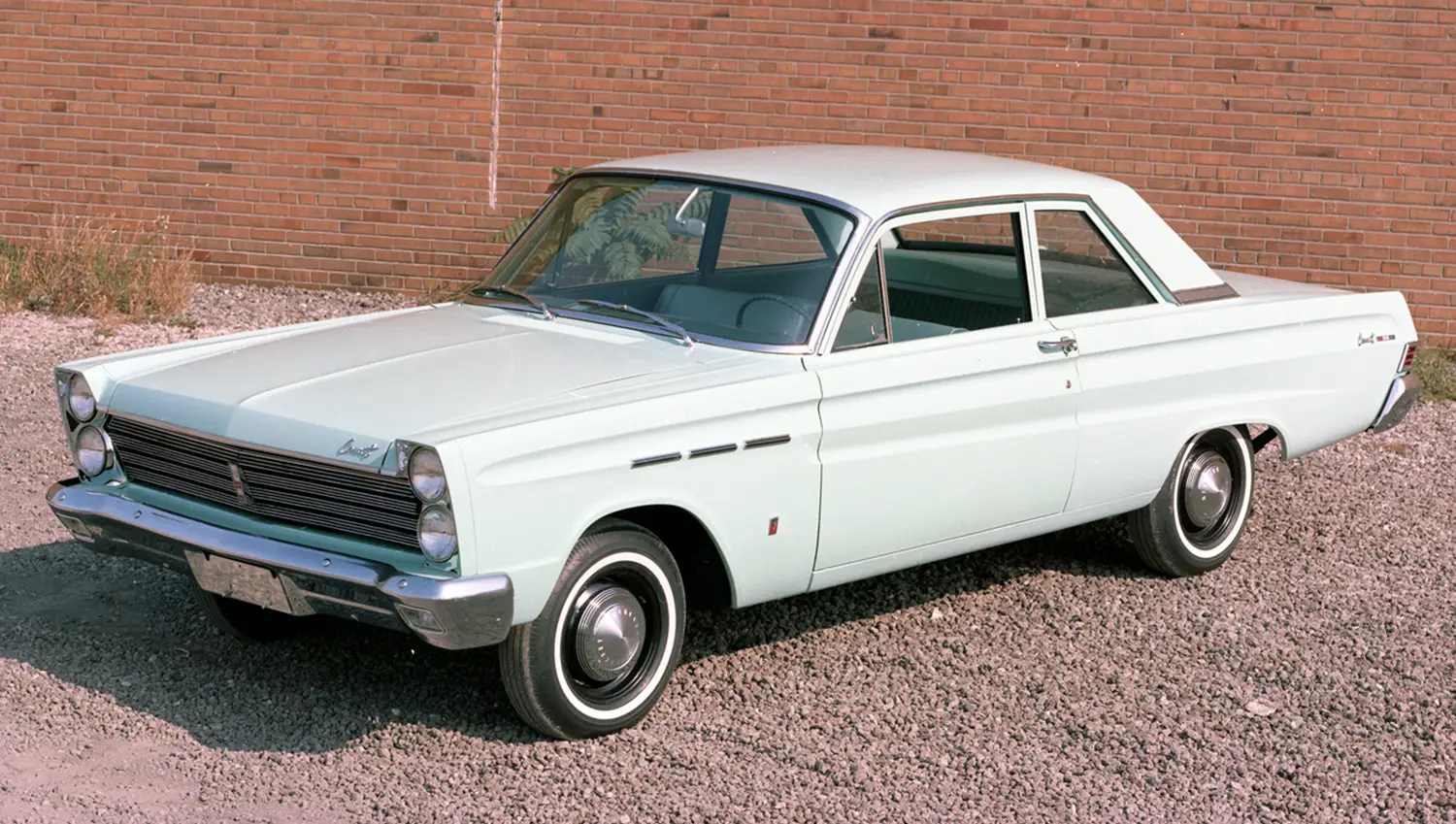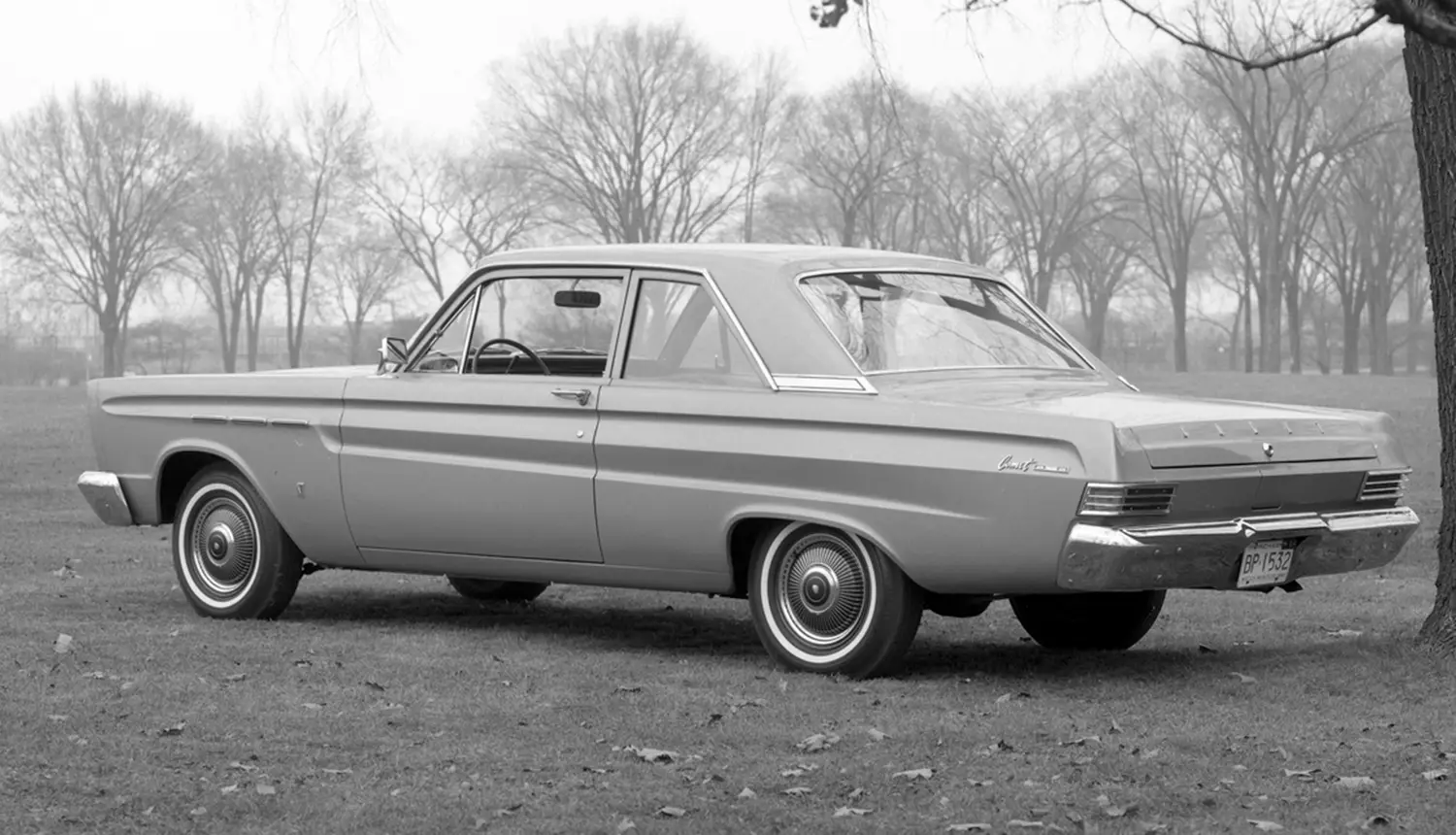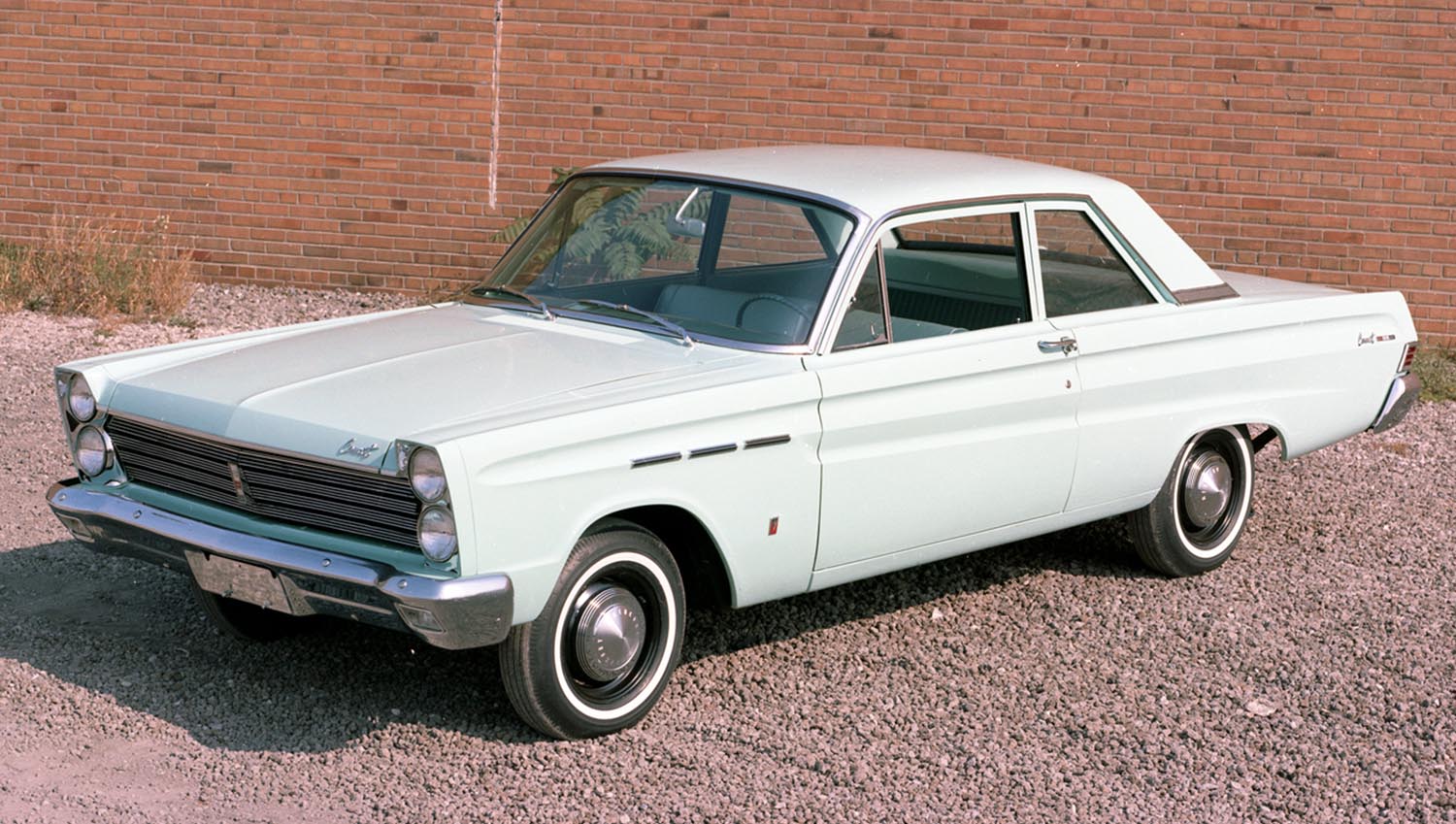
The 1965 Mercury Comet 202 two-door Sedan played a critical role in Mercury’s strategy during a period of massive upheaval in the American automotive landscape. While not the highest-performance model, the 202 represented the Comet’s entry point, offering a blend of new styling, durability, and economical transport. It allowed Mercury to compete directly against rivals by providing a basic, yet well-styled, two-door vehicle that hinted at the performance potential found higher up the Comet line. The model’s success proved that American buyers valued a sensible car with a hint of upscale style.
The Comet’s Humble, Upscale Origins
The Comet nameplate debuted as a standalone model in 1960. It was originally intended to be an Edsel model, but Ford reassigned it after the Edsel division failed. Consequently, early models carried Edsel DNA, most notably in the elliptical taillight lenses. For a long time, the Comet was marketed as a “senior compact,” as it was built on a stretched Ford Falcon platform. This positioning gave the Comet a slightly longer wheelbase and better interior trim than its Ford counterpart.
A New Look for a Transitional Era
The 1965 model year was the final of the Comet’s second generation. This era brought a significant redesign that made the car look more squared and substantial. The most noticeable change for 1965 was the introduction of vertically stacked quad headlights. This bold styling feature brought the Comet in line with Mercury’s larger cars. It gave the humble 202 two-door Sedan a distinct, upscale look on the road.
The 202: The No-Frills, Durable Entry Point
The 202 was the base trim level for the 1965 Comet line. It sat below the 404, Caliente, and the performance-focused Cyclone models. This two-door sedan featured minimal chrome and trim. Therefore, the 202 was the most economical Comet available. Mercury specifically promoted the 202 as being reliable and durable. For instance, the Comet name built its reputation on grueling endurance events.
Endurance Runs Cemented a Reputation
Mercury engineers made a conscious decision to promote the Comet’s toughness. A team of 1965 Comets completed an incredible 16,247-mile journey. They drove from the bottom tip of South America all the way to Fairbanks, Alaska. This grueling 40-day run demonstrated the Comet’s mechanical integrity. Consequently, the durable nature of the Comet 202 became its major selling point.
Inside the Economical Cabin
The Comet 202 interior was straightforward and functional. It featured standard vinyl upholstery and a front bench seat. The dashboard layout was clean and easy to read. However, even as a base model, the 202 still benefited from Mercury’s goal. Mercury wanted to offer a slightly more premium feel than a standard Ford. Thus, the cabin offered a comfortable, honest space for daily driving.
A Platform Ready for Performance
The 1965 Comet’s structure was ready for much higher performance applications. This proved especially true thanks to its shared architecture with the Ford Fairlane platform. This shared, robust unibody design meant the base 202 sedan was fundamentally sound. Although most owners chose the standard six-cylinder, the body was capable of handling V8 power upgrades. The Comet Cyclone’s racing pedigree benefited the entire line.
Engine Specs and Performance of the 1965 Mercury Comet 202 two-door Sedan
The 1965 Mercury Comet 202 two-door Sedan was powered by a standard 200 cubic-inch inline-six engine. This reliable six-cylinder produced 120 horsepower. It was typically mated to a column-shifted three-speed manual transmission. Furthermore, a Merc-O-Matic three-speed automatic was an available option for easier driving. For customers wanting more power, the venerable 289 cubic-inch V8 was offered. This V8 produced 200 horsepower in its two-barrel version. This V8 option transformed the car into a highly capable machine.
The 1965 Mercury Comet 202 two-door Sedan holds an important place in the Comet story. It stands as the foundational model that allowed the higher-performance cars to flourish. Its clean, handsome styling with stacked headlights perfectly captured the mid-sixties aesthetic. The 202 offered dependability and a dash of style without a high price tag. This blend of economy and subtle luxury made it a successful example of Mercury’s core philosophy.
Disclaimer: Content on this site is for informational purposes only. Vehicle specs, pricing, and availability may change. Always verify details with official sources before making decisions. Opinions are those of the authors.
Source: Ford Heritage Vault

